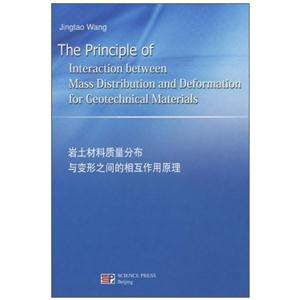-
>
中国古代建筑概说
-
>
世界古建筑之谜
-
>
如何理解建筑
-
>
中国的建筑与景观
-
>
营造法式
-
>
美国建筑设计的领跑者:麦金、米德与怀特事务所专辑
-
>
百年城市规划史:让都市回归都市
岩土材料质量分布与变形之间的相互作用原理 版权信息
- ISBN:9787030289049
- 条形码:9787030289049 ; 978-7-03-028904-9
- 装帧:一般胶版纸
- 册数:暂无
- 重量:暂无
- 所属分类:>>
岩土材料质量分布与变形之间的相互作用原理 本书特色
《岩土材料质量分布与变形之间的相互作用原理(英文版)》由科学出版社出版。
岩土材料质量分布与变形之间的相互作用原理 内容简介
在本书中,作者提出了一个岩土材料质量分布与变形之间的相互作用原理。它陈述为,在岩土塑性变形中,存在质量分布与变形之间高度复杂的相互作用,它是岩土变形重要基本特性产生的根源。压硬性和剪胀性是这个相互作用的两种作用方式。另外,推导出了该原理的三个推论:(1)质量密度控制剪切抗力的变化;(2)应力路径相关性是压硬性和剪胀性的联合效应;(3)质量分布与变形之间的相互作用贯穿整个变形过程,直到进入临界状态,该相互作用消失。在这个原理的指导下,在不可逆过程热力学框架内,推导出了反映该相互作用的岩土的本构方程,它们能够较全面地和精确地描述岩土的基本变形特性。基于这组本构方程,提出了一个岩土本构建模的数值方法,并建立了在多种应力路径下,粘土和砂土的弹一塑性本构模型。
岩土材料质量分布与变形之间的相互作用原理 目录
岩土材料质量分布与变形之间的相互作用原理 节选
《岩土材料质量分布与变形之间的相互作用原理(英文版)》主要内容简介:Rock and soil are the major constituent materials of the lithosphere of the earth. They are also the most widely used engineering materials. Rock and soil exhibit some remarkable characteristics of deformation and strength behavior, such as the pressure sensitivity(or pressure dependency), shear dilatancy, dependency of stress path etc. The two phenomena of pressure sensitivity and shear dilatancy have long been known by people. However, their origin of generation is not explained rationally yet.
岩土材料质量分布与变形之间的相互作用原理 相关资料
插图:Loading may induce strain hardening, whereas unloading or reloading only re-sults in elastic deformation. The loading-unloading-reloading process can be de-scribed by means of a family of yield surfaces with a hardening parameter.However, it is frequently observed in geotechnical structures that even undermonotonic loading conditions, the stress paths with different directions can alsoinduce different plastic responses of geotechnical materials. Now the fact thatthe response of geotechnical materials is dependent upon the stress path has beenrecognized by most of investigators and engineers. However, there are differentopinions about its origin of creation, for example, some researchers attribute thedependency of stress path to anisotropy, inelasticity and dependence of history ofmaterials (e.g., see (wood, 1990)), others believe that it is due to the cross effectsof the mean normal stress and deviator stress(e.g., see (Sun et al., 1987)).The stress paths that are actually followed by soil elements in various geotech-nical structures, such as tunnel, slope, deep foundation etc., are quite different.Some typical cases of stress paths encountered in practical geotechnical engi-neering will be presented as follows.
- >
企鹅口袋书系列·伟大的思想20:论自然选择(英汉双语)
企鹅口袋书系列·伟大的思想20:论自然选择(英汉双语)
¥6.3¥14.0 - >
伊索寓言-世界文学名著典藏-全译本
伊索寓言-世界文学名著典藏-全译本
¥6.1¥19.0 - >
苦雨斋序跋文-周作人自编集
苦雨斋序跋文-周作人自编集
¥6.9¥16.0 - >
巴金-再思录
巴金-再思录
¥33.1¥46.0 - >
烟与镜
烟与镜
¥20.6¥48.0 - >
莉莉和章鱼
莉莉和章鱼
¥18.1¥42.0 - >
大红狗在马戏团-大红狗克里弗-助人
大红狗在马戏团-大红狗克里弗-助人
¥3.3¥10.0 - >
推拿
推拿
¥12.2¥32.0
-
建筑材料检测实训指导
¥28.5¥37 -
汉宝德谈现代建筑
¥15.1¥39.8 -
2022图书×抽奖盲袋
¥9.9¥25 -
2023读书月阅读盲盒——天黑,闭眼,刀谁?
¥42.3¥158 -
2022读者节纪念徽章-三星会员专属
¥45¥45.6
















